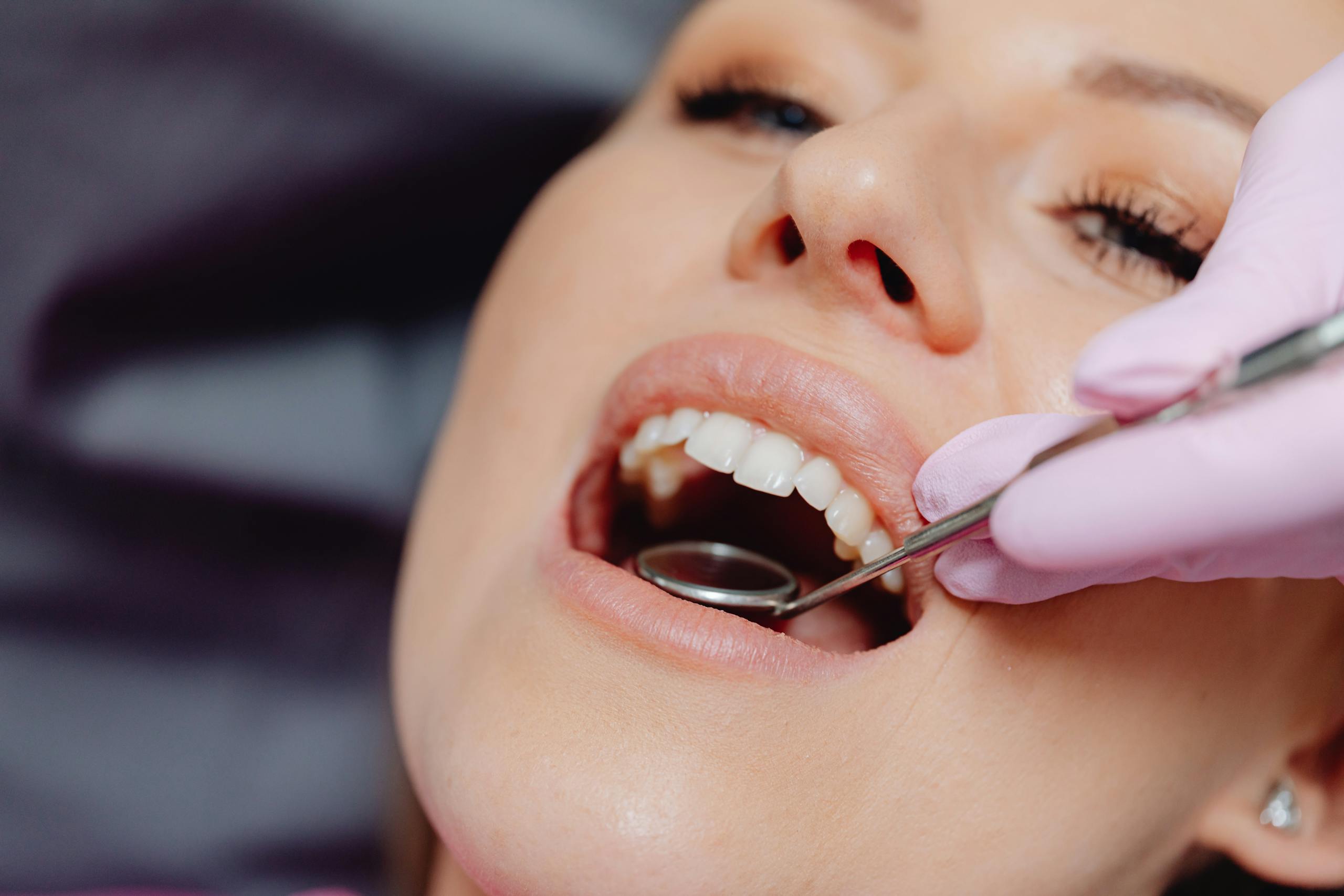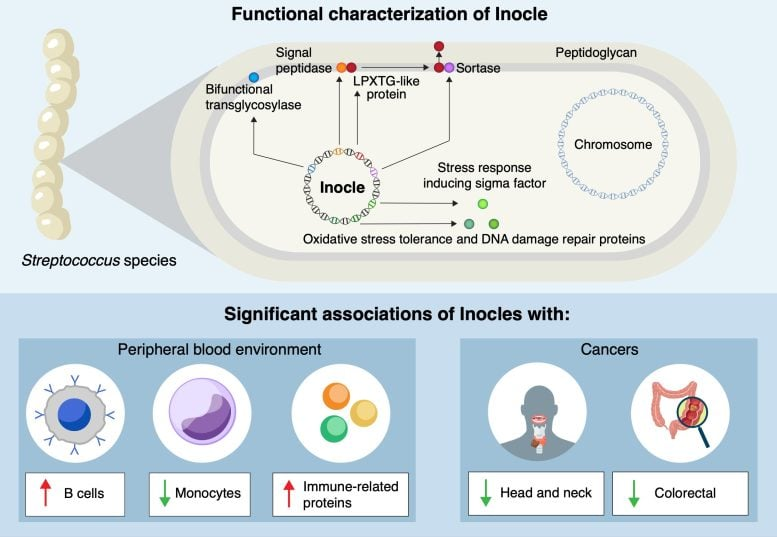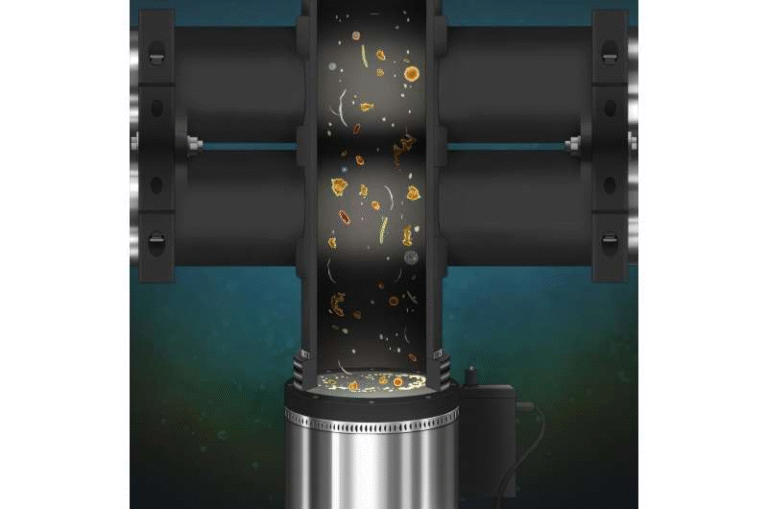Scientists Uncover Giant DNA Elements Called Inocles in the Human Mouth

Researchers from the University of Tokyo and their collaborators have made a striking discovery: large DNA elements, named Inocles, living in the human mouth. These massive pieces of DNA had gone unnoticed until now and are turning out to be more important than anyone expected.
Found in about 74% of the human population, Inocles could influence oral health, immunity, and even cancer risk. This finding not only reshapes our understanding of the oral microbiome but also showcases how advanced sequencing technologies are helping scientists uncover what was previously invisible.

What Exactly Are Inocles?
Inocles are a type of extrachromosomal DNA element—that means they exist outside of the main DNA of bacteria. Most people have heard of plasmids, which are small circular pieces of DNA that bacteria carry. Inocles are like plasmids, but they are huge by comparison. On average, they are around 350 to 395 kilobase pairs long, making them some of the largest DNA elements ever found in the human microbiome.
To put this into perspective, most plasmids are just a few tens of kilobase pairs in size. Inocles are 10 to 15 times larger, and with this size comes more genetic information. This means Inocles can carry a wide variety of genes that give bacteria extra tools to adapt, survive, and interact with their environment.
How Were They Discovered?
Detecting something this big inside saliva wasn’t easy. For years, scientists missed Inocles simply because of the limitations of sequencing technology. Most genetic studies use short-read sequencing, which breaks DNA into tiny pieces. Reassembling large elements like Inocles from such small fragments is practically impossible.
The breakthrough came when the researchers used long-read sequencing technologies—such as Oxford Nanopore systems—that allow DNA to be read in long continuous stretches. This technology makes it possible to assemble big, circular DNA elements like Inocles without losing key information.
Another key step was the creation of a method called preNuc by co-first author Nagisa Hamamoto. This technique removes human DNA from saliva samples before sequencing, which makes it easier to focus only on the microbial DNA. By cleaning up the samples this way, the team was able to reconstruct complete Inocle genomes for the first time.
Where Do Inocles Live?
The research revealed that Inocles are hosted primarily by the bacterium Streptococcus salivarius. This species is a common resident of the human mouth and is usually considered beneficial, playing roles in maintaining oral balance. However, figuring out the host was not straightforward because Inocles were so large and unusual compared to other DNA elements.
A large survey of saliva samples—nearly 500 metagenomes from people around the world—showed that Inocles are widespread, present in almost three-quarters of the population. This makes them a global phenomenon, not something confined to one specific group or region.
What Do Inocles Do?
One of the most fascinating aspects of Inocles is the variety of genes they carry. Scientists found that Inocles contain over 1,600 different protein families, many of which are linked to how bacteria handle stress and interact with their environment.
Some of the key functions coded by Inocle genes include:
- DNA repair and recombination: Genes like DNA polymerase III, RecD-like helicase, and gyrase suggest that Inocles help bacteria fix DNA damage.
- Oxidative stress response: Genes such as RpoS (a stress sigma factor) and NrdH (a peroxidase cofactor) help bacteria survive the harsh oxidative environment of the mouth.
- Cell wall and membrane functions: Enzymes such as bifunctional transglycosylase, sortase A, and proteins with LPXTG motifs indicate that Inocles may assist in strengthening cell walls, anchoring proteins, and enhancing bacterial adhesion to surfaces.
Importantly, researchers also found evidence that many of these genes are actively expressed in the oral microbiome, which means they’re not just sitting there unused. Instead, they appear to contribute to the way bacteria function in real time.
Potential Health Connections
Beyond bacterial survival, Inocles may have important implications for human health. The study revealed several notable connections:
- Cancer association: A specific type of Inocle, called Inocle-α, was found at significantly lower levels in patients with head and neck cancers as well as colorectal cancers. While this doesn’t prove causation, it suggests that Inocles could serve as biomarkers for these cancers.
- Immune response: Inocle-α abundance was positively correlated with certain immune cells and plasma proteins that are linked to microbial infections. This hints at a possible connection between Inocles, the immune system, and overall health.
These associations raise the exciting possibility that analyzing saliva for Inocle presence or abundance could one day help doctors assess disease risk.
What’s Next for Inocle Research?
The researchers are just scratching the surface of what Inocles can do. Their next steps include:
- Culturing bacteria with Inocles in the lab to directly study their behavior.
- Exploring gene function: Many Inocle genes remain uncharacterized, so scientists plan to use laboratory experiments and advanced tools like AlphaFold to predict and understand their roles.
- Studying disease links: Further work will determine whether Inocles actively protect against certain diseases, or whether their absence in disease patients is just a correlation.
- Testing transmission: One unanswered question is whether Inocles can spread between people the way plasmids sometimes spread between bacteria.
Why This Discovery Matters
The discovery of Inocles challenges the long-standing belief that we already know most of what’s inside the human microbiome. Just like the gut, the oral microbiome is a complex ecosystem, and large, previously invisible DNA elements like Inocles add a new layer to that complexity.
It also highlights the power of modern sequencing technologies. Without long-read sequencing and the preNuc method, Inocles would still be hidden. This suggests there may be many more “giant DNA surprises” waiting to be uncovered in other microbiomes, such as the gut, skin, or lungs.
Extra Insight: The Oral Microbiome
To better appreciate what Inocles mean, it’s worth revisiting the oral microbiome itself. The human mouth is home to hundreds of bacterial species, along with fungi, viruses, and other microorganisms. Together, they form a community that influences not just oral health but overall well-being.
- Balance is key: When the oral microbiome is balanced, it helps prevent harmful bacteria from taking over.
- Link to systemic diseases: Research has shown connections between oral health and conditions like heart disease, diabetes, and even Alzheimer’s disease.
- Bacteria like Streptococcus salivarius (the host of Inocles) are usually beneficial, helping keep harmful microbes in check.
In this context, Inocles could represent an extra toolkit that bacteria use to thrive, and indirectly, this may influence how well the oral microbiome supports human health.
Extra Insight: Extrachromosomal DNA in Microbes
Inocles are part of a broader category called extrachromosomal elements. These include plasmids, viruses, and other circular DNA that exist outside the main bacterial chromosome.
- Plasmids often carry antibiotic resistance genes, which can spread quickly between bacteria.
- Megaplasmids and similar giant DNA structures have been found in soil microbes, but rarely studied in humans until now.
- Inocles seem unique in that they don’t primarily carry resistance or virulence genes but instead genes that promote stress resistance and adaptation.
This makes them different from the more familiar DNA elements that often worry doctors and researchers. Instead, they might play a stabilizing role in the oral ecosystem.
Caveats and Open Questions
Even with all these exciting findings, a few uncertainties remain:
- We don’t yet know how stable Inocles are in an individual’s mouth over time.
- It’s unclear whether Inocles can transfer between bacteria easily, or even spread between people.
- The link to cancer could be a protective effect, or it could simply be that cancer patients have oral environments where Inocles don’t thrive.
- Many of the genes remain mysterious, and proving their exact function will take years of work.
Final Thoughts
The discovery of Inocles is a reminder that science is still uncovering hidden layers of the human body. These massive DNA elements were invisible until now, but with modern technology, researchers have revealed that they’re widespread, functionally important, and possibly linked to human disease. As research continues, Inocles could become key players in oral health studies, microbiome research, and even cancer diagnostics.





